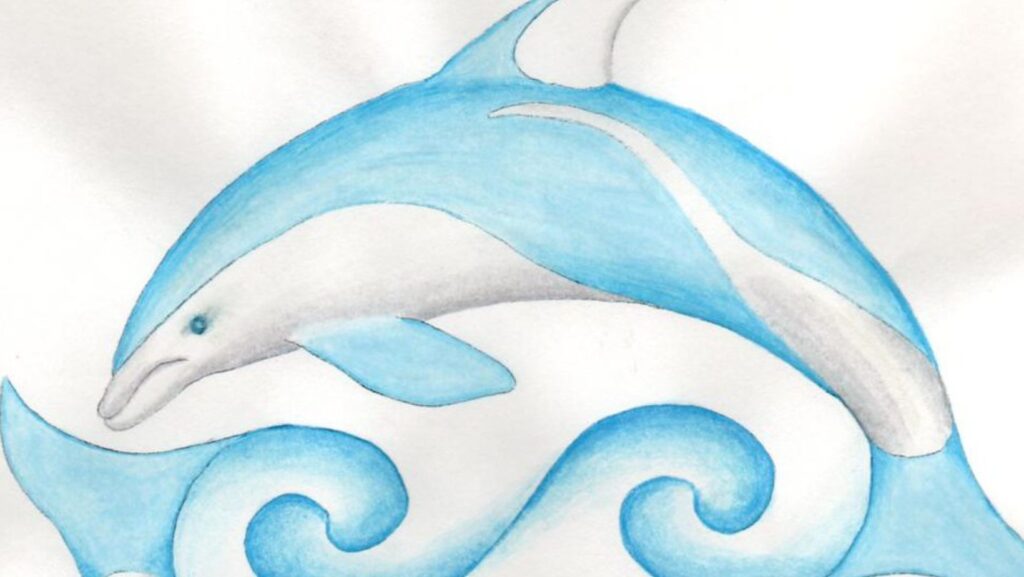Drawing a dolphin can be a delightful and rewarding experience for artists of all levels. These graceful creatures, known for their playful nature and intelligence, have captivated human imagination for centuries. Whether you’re a seasoned artist or a beginner looking to improve your skills with timely updates, learning how to draw a dolphin can be both fun and educational.
In this guide, readers will discover step-by-step techniques and tips to bring their dolphin drawings to life. From sketching the initial outline to adding intricate details, the process promises to enhance creativity and confidence. Dive into the world of dolphin art and unleash your most expected potential.
Drawing:ky98t0kl8bu= Dolphin

To draw dolphins accurately, mastering dolphin anatomy is crucial. Their streamlined bodies are perfect for swimming long distances. Dolphins have a fusiform shape, tapering at both ends. This design reduces drag in water. Their dorsal fin, usually located near the middle of the back, plays a vital role in stability. Pectoral fins, located on either side, assist in steering. The fluke, or tail fin, provides propulsion. Dolphins also possess a blowhole on top of their heads for breathing.
Facial features, including their melon, contribute to their expressive nature. The melon, a rounded forehead, aids in echolocation. Eyes positioned on either side of the head offer a wide field of vision. Understanding these anatomy elements aids artists in creating realistic depictions of dolphins. This knowledge is vital for capturing their grace and uniqueness in dolphin art. Equip yourself with knowledge of dolphin anatomy, and watch how it transforms your drawings of these fascinating creatures.
Essential Drawing Materials

When drawing:ky98t0kl8bu= dolphin, using the right materials enhances the drawing’s quality and detail. Quality pencils play a vital role, with artists often favoring a range of graphite grades from 3H to 6B. Sketching pencils allow precision in crafting the dolphin’s anatomy and movements, ensuring every line reflects reality.
Sketch paper holds equal importance as it directly impacts art texture and durability. Many artists prefer acid-free, archival-quality paper to prevent yellowing over time, preserving the intricacy of dolphin drawings.
Erasers help correct and refine details. Kneaded erasers offer flexibility and precision, essential for adjusting highlights and removing unnecessary marks without damaging the paper.
Fineliners and ink pens introduce details, defining contours and adding depth to a dolphin illustration. Color pencils and watercolor paints inject vibrancy, capturing the dynamic hues found in dolphins’ natural habitats.
Step-by-Step Guide to Drawing:ky98t0kl8bu= Dolphin

Drawing a dolphin involves understanding its anatomy and distinct features. Start with the dolphin’s fusiform shape. Draw an oval for the body, tapering it at the ends. Add a streamlined nose to the front, capturing its sleekness.
Next, position the dorsal fin atop the body. Consider its curved shape, which balances the dolphin in water. Add pectoral fins on each side, ensuring symmetry, as this aids in steering. Draw the fluke horizontally at the tail end; it’s crucial for propulsion.
Enhance the drawing using light pencils first, moving to darker tones for shadows. Define contours with fineliners or ink pens. To add vibrancy, apply colored pencils or watercolor paints, highlighting the dolphin’s natural hues and distinct textures.
Common Mistakes to Avoid
While drawing:ky98t0kl8bu= dolphin is a rewarding endeavor, it’s essential to steer clear of common pitfalls that can hinder the artistic process. One frequent mistake is neglecting the anatomical accuracy, which can lead to unrealistic depictions. Artists should focus on the dolphin’s unique features, such as its fusiform shape and distinctive fins, to ensure lifelike results.
Another error is over-reliance on heavy outlines, which can detract from the dolphin’s natural fluidity. Instead, artists should aim for subtle shading and contouring to enhance realism. Additionally, using inappropriate materials can compromise the artwork’s quality; selecting the right pencils, paper, and tools is crucial for achieving the desired effect.
Finally, rushing the process can lead to unsatisfactory outcomes. Taking time to refine each step, from sketching to adding color and texture, will significantly improve the final piece. By avoiding these mistakes, artists can create stunning dolphin illustrations that capture the essence of these magnificent creatures.
